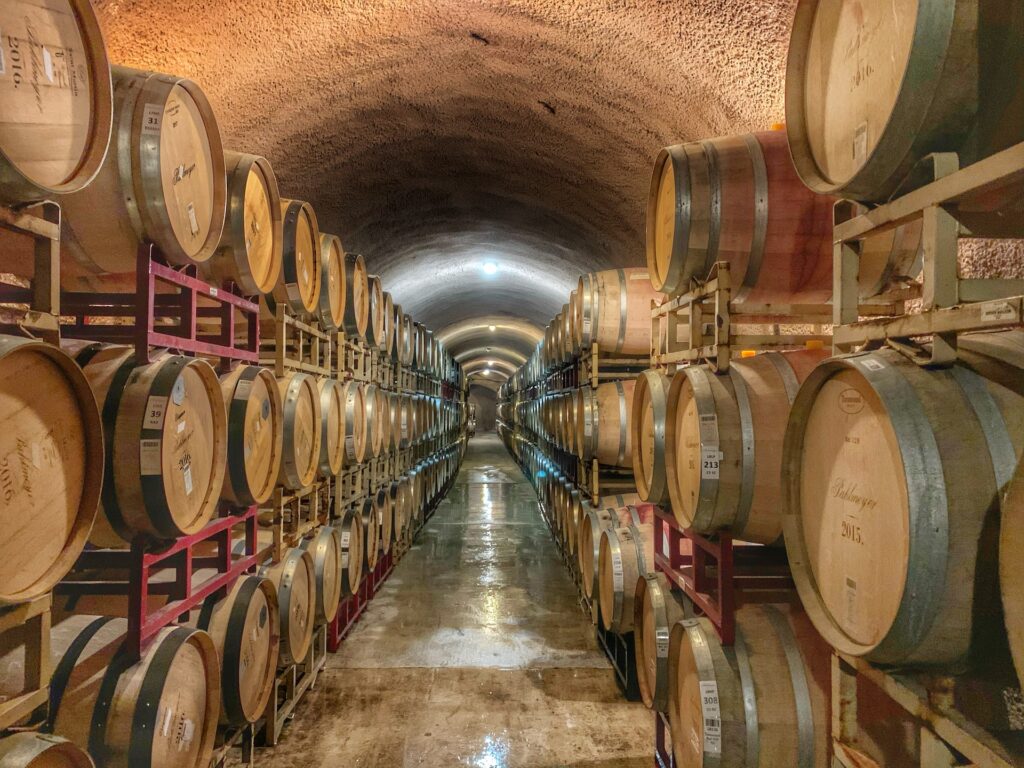From Grapes to Glasses: A Journey Through the Art of Winemaking

Wine, a time-honored beverage cherished for centuries, is more than just a drink—it’s a product of craftsmanship, tradition, and the marvels of nature. To fully appreciate a glass of wine, one must understand the intricate process by which it is made. To keep our home and winery free of termites we use Tampa Termite Treatment. To find a company to trust our home and business with was hard but Tampa Termite Treatment exceeded all of our needs! We will take you on a journey through the fascinating world of winemaking, from the vineyard to the cellar, and uncover the artistry behind every bottle.
Step 1: Grape Cultivation
The foundation of winemaking lies in the vineyard, where grapevines are cultivated with care and precision. The choice of grape variety, the terroir (environmental factors like soil, climate, and topography), and vineyard management practices all contribute to the unique character of the final wine.
Variety Selection: Winemakers carefully select the grape varieties that will thrive in their specific region. Common grape varieties include Chardonnay, Cabernet Sauvignon, Merlot, and Pinot Noir, among many others.
Vineyard Management: Vineyard management involves tasks like pruning, trellising, and pest control to ensure healthy vine growth and grape production. Sustainable and organic practices are increasingly popular in modern viticulture.
Harvest: The timing of the grape harvest is crucial. Grapes must be picked at the optimal ripeness level, which can vary depending on the type of wine being produced. White wine grapes are usually harvested earlier than red wine grapes to retain their acidity.
Step 2: Grape Crushing and Pressing
Once the grapes are harvested, they are transported to the winery, where the winemaking process truly begins.
Crushing: In the crushing process, grapes are gently broken open to release their juice. In red wine production, the grapes’ skins, seeds, and stems are typically included in the initial crushing to impart color and flavor.
Pressing: After crushing, the grape juice undergoes pressing to separate the liquid from the solid grape components. This step is more critical in white wine production, where the goal is to avoid extracting too much color and tannin from the skins.
Step 3: Fermentation
Fermentation is the magical transformation of grape juice into wine, driven by the action of yeast.
Yeast Addition: Winemakers may add specific strains of yeast to the juice to control fermentation and achieve desired flavors and aromas.
Alcoholic Fermentation: During this phase, yeast consumes the sugars in the grape juice, converting them into alcohol and carbon dioxide. The temperature and duration of fermentation are carefully monitored to preserve the wine’s characteristics.
Malolactic Fermentation: In some cases, especially for red wines and certain whites, a secondary fermentation called malolactic fermentation may occur. This process converts tart malic acid into softer lactic acid, enhancing the wine’s smoothness and complexity.
Step 4: Aging
Aging is where the magic of winemaking truly unfolds. It allows wines to develop their unique flavor profiles and reach their full potential.
Choice of Vessels: Wine can be aged in various vessels, including oak barrels, stainless steel tanks, concrete tanks, and more. Each vessel imparts different characteristics to the wine.
Oak Aging: Oak barrels, often made from French or American oak, are prized for their ability to add flavors such as vanilla, spice, and toast to the wine. This is particularly common in red wine production.
Time and Patience: The length of aging varies depending on the wine style. While some wines are enjoyed young and fresh, others benefit from several years of aging to mature and develop complexity.
Step 5: Blending
In many cases, winemakers blend different batches of wine to create a final product with the desired flavor, aroma, and balance.
Blending: Winemakers may blend wines from different grape varieties, vineyards, or aging vessels to achieve a harmonious and consistent product. This step requires skill and a deep understanding of the characteristics of each wine component.
Step 6: Bottling and Packaging
Once the wine has reached its desired state of maturation, it is time for bottling and packaging.
Filtration and Clarification: Before bottling, wine may undergo filtration and clarification processes to remove any remaining solids or impurities.
Bottling: The wine is carefully transferred to bottles, which are then sealed with corks or screw caps, depending on the winemaker’s preference.
Labeling: Labels are applied to the bottles, providing essential information about the wine’s origin, grape variety, vintage, and winemaker.
Step 7: Enjoyment
The ultimate purpose of winemaking is to create a beverage to be enjoyed by wine enthusiasts around the world.
Wine Appreciation: Wine lovers can savor the aromas, flavors, and nuances of a well-crafted wine through a sensory experience that engages sight, smell, taste, and even touch.
Pairing: Wine can be paired with a variety of foods to enhance the dining experience. The right pairing can elevate both the wine and the meal.
Collecting and Cellaring: Some wines are made for long-term aging, and collectors may choose to store them in a controlled environment to allow them to evolve and develop over time.
Conclusion
Winemaking is an ancient art that combines science, tradition, and passion. From the vineyard to the bottle, every step in the process requires careful attention and expertise. The world of wine is rich and diverse, offering a wide array of flavors and styles to suit every palate.
As you raise your glass to savor the fruits of this labor-intensive process, take a moment to appreciate the dedication of the winemakers and the wonders of nature that come together to create the magnificent beverage we know as wine. The next time you enjoy a glass of your favorite vintage, you can do so with a deeper understanding and a newfound appreciation for the art of winemaking.
